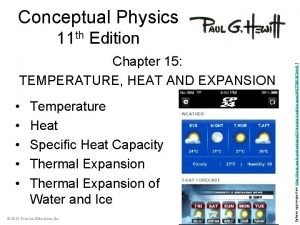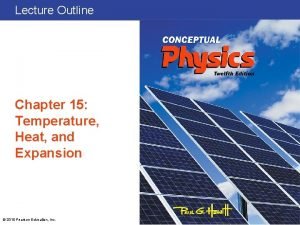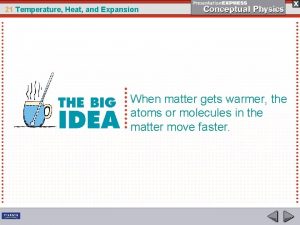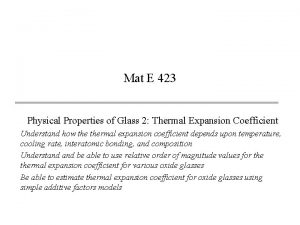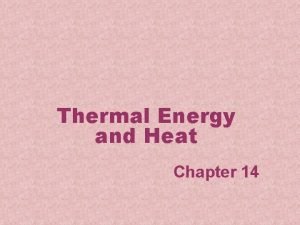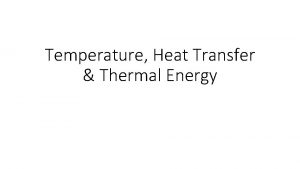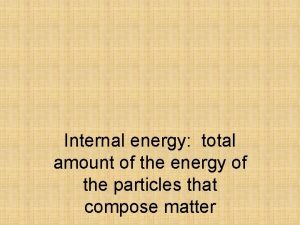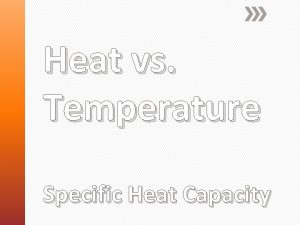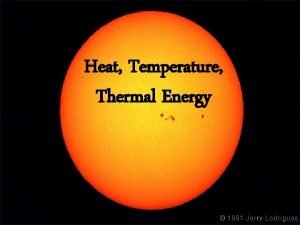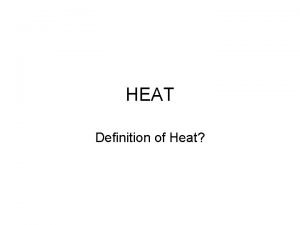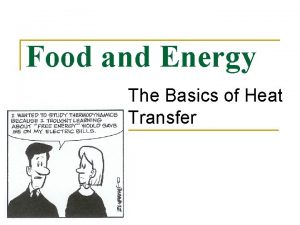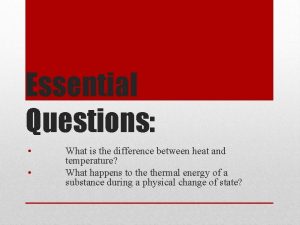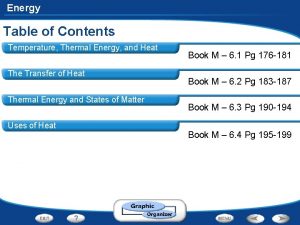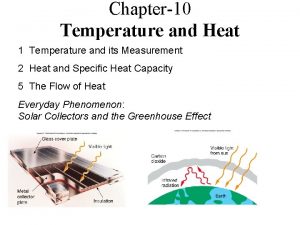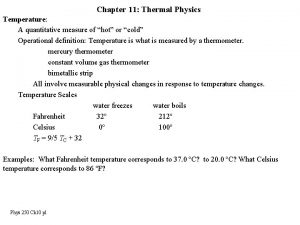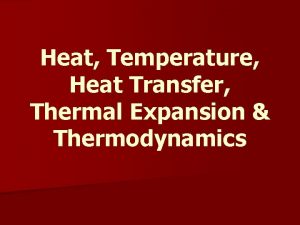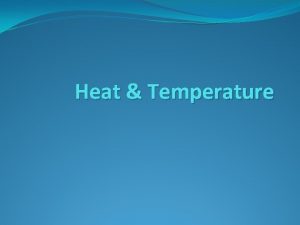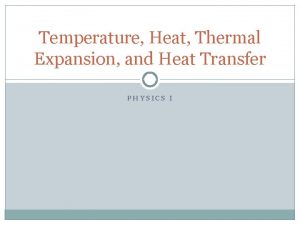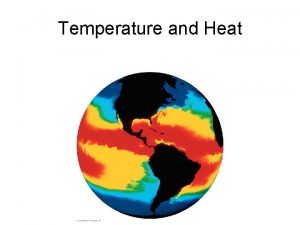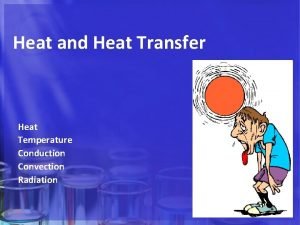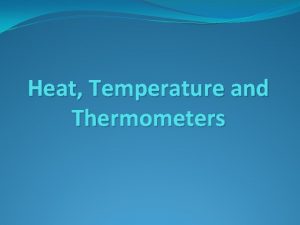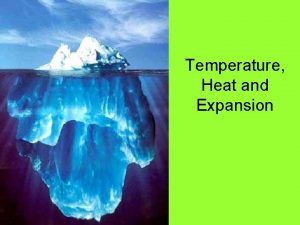Temperature Heat Expansion Chapter 15 Temperature Temperature We























- Slides: 23

Temperature, Heat, & Expansion Chapter 15

Temperature

Temperature • We a express temperature of some quantity of matter by number that correspond to its degree of hotness or coldness on some chosen scale.

• Galileo invented the first “thermal meter” for measuring temperature. • The thermometer ▫ Thermal is the Greek term for heat

• What are three scales that we use to measure temperature? • What is zero on each of these scales?

Heat

• Heat is defined as the energy transferred from one object to another because of a temperature difference between them. • The direction of spontaneous energy transfer is always from a warmer object to a neighboring cooler object.

Does Matter Contain Heat? • Matter does not contain heat. • Matter contains: ▫ Molecular kinetic energy ▫ Possibly potential energy

• Heat is energy in transit from a body of higher temperature to one of lower temperature. • Once transferred, the energy ceases to be heat.

Internal Energy • The grand total of all energies inside a substance. • In addition to the translational kinetic energy of moving molecules in a substance, there is energy in other forms. ▫ Rotational kinetic energy of molecules ▫ Kinetic energy due to internal movements of atoms within molecules ▫ Potential energy due to the forces between molecules.

• When a substance absorbs or gives off heat, the internal energy of the substance increases or decreases.

What happens in the following situation – in terms of heat flow? Red-hot thumbtack Bowl of hot water

Measuring Heat • Since heat is a form of energy, it’s measured in joules. • In the US we more commonly measure unit in calories. • The calorie is defined as the amount of heat required to change temperature of 1 gram of water 1 ⁰C

Specific Heat Capacity

• Different substances have different capacities for storing internal energy. • Different materials require different quantities of heat to raise the temperature of a given by a specified number of degrees. • Different materials absorb energy in different ways.

• Energy may increase ▫ The internal motion of molecules �Which raises the temperature ▫ The amount of internal vibration or rotation within molecules and go into potential energy �Which does not raise the temperature • Generally a combination of both occurs.

Specific Heat Capacity • The specific heat capacity of any substance is defined as the quantity of heat required to change the temperature of a unit of mass of the substance by 1 degree.

Specific Heat Capacity Cont. •

• We can think of specific heat capacity as thermal inertia. ▫ Inertia is an objects resistance to a change in its state of motion • Specific heat capacity is a sort of thermal inertia since it signifies the resistance of a substance to a change in its temperature

Thermal Expansion

• When the temperature of a substance is increased, its molecules or atoms move faster and further apart on average • The result is an expansion of the substance. ▫ All 4 of the states of matter will expand as temperature increases.

• The expansion of substances must be accommodated in structures and devices of all kinds.

Examples…
 Chapter 21 temperature heat and expansion
Chapter 21 temperature heat and expansion Chapter 15 temperature heat and expansion
Chapter 15 temperature heat and expansion Chapter 21 temperature, heat and expansion answer key
Chapter 21 temperature, heat and expansion answer key Chapter 21 temperature, heat and expansion answer key
Chapter 21 temperature, heat and expansion answer key Chapter 21 temperature heat and expansion
Chapter 21 temperature heat and expansion Chapter 21 temperature heat and expansion
Chapter 21 temperature heat and expansion Metal heat expansion chart
Metal heat expansion chart Chapter 14 section 1 heat and temperature answers
Chapter 14 section 1 heat and temperature answers Heat capacity vs specific heat
Heat capacity vs specific heat Latent heat dimension
Latent heat dimension Moist heat method definition
Moist heat method definition Heat deflection temperature
Heat deflection temperature Thermal energy in states of matter
Thermal energy in states of matter What is heat
What is heat Heat thermal energy and temperature
Heat thermal energy and temperature Difference between heat and temperature
Difference between heat and temperature Heat vs temperature
Heat vs temperature Heat flow
Heat flow Heat energy def
Heat energy def Temperature vs heat
Temperature vs heat The difference between heat and temperature
The difference between heat and temperature Heat vs thermal energy vs temperature
Heat vs thermal energy vs temperature Unit of specific heat
Unit of specific heat Is temperature a quantitative measure of heat
Is temperature a quantitative measure of heat

